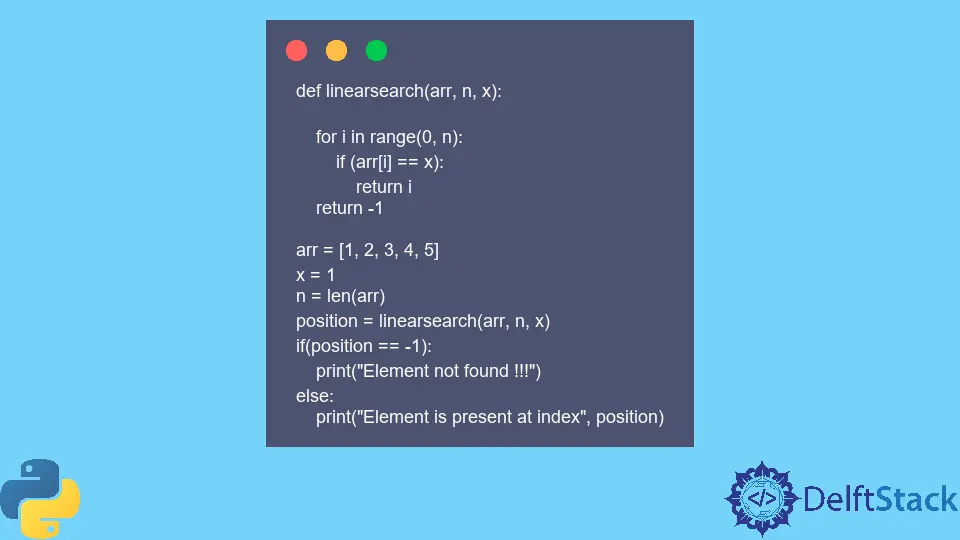Python 中的线性搜索
Harshit Jindal
2023年1月30日

注意
如果你想详细了解线性搜索,那么可以参考线性搜索算法一文。
线性搜索算法
假设我们有一个未排序的数组 A[],包含 n 个元素,我们想找到一个元素-X。
-
使用
for循环从最左边的元素开始遍历数组中的所有元素,并执行以下操作。- 如果
A[i]的值与X匹配,则返回索引i。(如果有多个元素与X匹配,则不返回索引i,而是打印所有索引或将所有索引存储在一个数组中并返回该数组。) - 否则继续下一个元素。
- 如果你在数组的最后一个元素,退出
for循环。
- 如果
-
如果没有一个元素匹配,那么返回
-1。
线性搜索的 Python 实现
def linearsearch(arr, n, x):
for i in range(0, n):
if arr[i] == x:
return i
return -1
arr = [1, 2, 3, 4, 5]
x = 1
n = len(arr)
position = linearsearch(arr, n, x)
if position == -1:
print("Element not found !!!")
else:
print("Element is present at index", position)
输出:
Element is found at index: 1
上述算法的时间复杂度为 O(n)。
作者: Harshit Jindal
Harshit Jindal has done his Bachelors in Computer Science Engineering(2021) from DTU. He has always been a problem solver and now turned that into his profession. Currently working at M365 Cloud Security team(Torus) on Cloud Security Services and Datacenter Buildout Automation.
LinkedIn